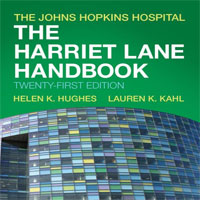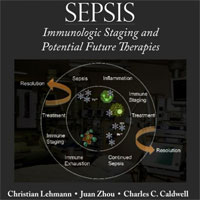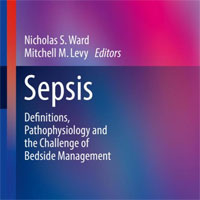Tag: inflammation
MIF But Not MIF-2 Recruits Inflammatory Macrophages in an Experimental Polymicrobial Sepsis Model
Excessive inflammation drives the progression from sepsis to septic shock. Macrophage migration inhibitory factor (MIF) is of interest because MIF promoter polymorphisms predict mortality in different infections, and anti-MIF... read more
Biomarker-guided Steroid Dosing in COVID-19 Pneumonia
Although corticosteroid administration has been associated with improved outcomes in severe COVID-19 pneumonia, their ideal use remains undefined with a "one size fits all" approach used, irrespective of the individual inflammatory... read more
Obesity, Inflammatory and Thrombotic Markers, and Major Clinical Outcomes in Critically Ill Patients with COVID-19 in the US
In critically ill patients with COVID-19, higher BMI was not associated with death or thrombotic events but was associated with a greater risk of ARDS and AKI-RRT. The lack of an association between BMI and circulating... read more
A Rare of Case of COVID-19-Related Pericardial Effusion and Cardiac Tamponade
Acute pericarditis involves inflammation of the pericardial sac, which is made of an inner mesothelial visceral layer that surrounds the heart. Normally, this layer produces ~50 mL of fluid to lubricate the heart and... read more
miR-221-5p-Mediated Downregulation of JNK2 Aggravates ALI
Sepsis and acute lung injury (ALI) are linked to mitochondrial dysfunction; however, the underlying mechanism remains elusive. We previously reported that c-Jun N-terminal protein kinase 2 (JNK2) promotes stress-induced mitophagy... read more
The Relationship Between Vitamin D and Asthma Exacerbation
Asthma is a chronic airway inflammatory condition that affects millions of people worldwide. It presents with reversible bronchoconstriction that makes it difficult for patients to breathe. Asthma flare-ups have several triggers,... read more
WHO Issues Guidelines on the Treatment of Children with MIS Associated with COVID-19
WHO issued updated guidelines on the management of multisystem inflammatory syndrome (MIS) in children associated with COVID-19 (MIS-C). MIS-C is a rare but serious condition where children with COVID-19 develop inflammation... read more
Mortality and Clinical Characteristics of MIS-C Associated with COVID-19
The clinical presentation and severity of Multisystem Inflammatory Syndrome in Children associated with COVID-19 (MIS-C) is widespread and presents a very low mortality rate in high-income countries. This research describes... read more
Endothelial Glycocalyx Degradation Contributes to Metabolic Acidosis in Children After Cardiopulmonary Bypass Surgery
Our data show that metabolic acidosis (increased strong ion gap) is associated with plasma concentration of heparan sulfate, a negatively charged glycosaminoglycan cleaved from the endothelial glycocalyx during cardiopulmonary... read more
The Use of Different Sepsis Risk Stratification Tools Uncovers Different Mortality Risks
Our data suggest that the sepsis risk stratification tools currently utilized in emergency departments and on the general wards do not predict mortality adequately. This is illustrated by the disparity in mortality risk... read more
Brain–lung Interactions and Mechanical Ventilation in Patients with Isolated Brain Injury
During the last decade, experimental and clinical studies have demonstrated that isolated acute brain injury (ABI) may cause severe dysfunction of peripheral extracranial organs and systems. Of all potential target organs... read more
Predicting Adverse Outcomes in COVID-19 Patients Using BV5%
Evidence suggests that vascular inflammation and thrombosis may be important drivers of poor clinical outcomes in patients with COVID-19. We hypothesized that a significant decrease in the percentage of blood vessels with... read more
Time Course of Risk Factors Associated with COVID-19 Mortality
The present multicentric study describes 1,260 critically ill patients with COVID-19-associated acute respiratory failure consecutively admitted to 24 Italian ICUs during the first pandemic wave. This study specifically... read more
The Harriet Lane Handbook: Mobile Medicine Series
Written "by residents, for residents" and reviewed by expert faculty at The Johns Hopkins Hospital, Lauren Kahl, MD and Helen K. Hughes, MD, MPH, The Harriet Lane Handbook, 21st Edition, remains your #1 source of pediatric... read more

Eosinophilic Esophagitis
Once considered a rare condition, eosinophilic esophagitis is now one of the most common conditions diagnosed during the assessment of feeding problems in children and during the evaluation of dysphagia and food impaction... read more
Incidence of Arrhythmia Higher in COVID-19 vs. Other CAPs
The incidence of arrhythmia was higher in COVID-19 than in other community-acquired pneumonia (CAP), with 2 out of 10 COVID-19 patients dying after developing arrhythmia. Higher incidence rates of conduction disorders... read more
Distinct antibody responses to SARS-CoV-2 in children and adults across the COVID-19 clinical spectrum
Clinical manifestations of COVID-19 caused by the new coronavirus SARS-CoV-2 are associated with age. Adults develop respiratory symptoms, which can progress to acute respiratory distress syndrome (ARDS) in the most severe... read more
Imatinib in COVID-19: Hope and Caution
Despite the undoubted progress achieved with the first vaccines against SARS-CoV-2 infection, the COVID-19 pandemic continues to affect thousands of people across the globe, particularly in those countries where vaccination... read more
COVID-19 ARDS has higher EVLWi and PVPI values than non-COVID-19 ARDS
Compared to acute respiratory distress syndrome (ARDS) patients without COVID-19, patients with COVID-19 had similar lung mechanics, but higher extravascular lung water index (EVLWi) and pulmonary vascular permeability index... read more
Steer Clear of Magnesium for COPD
Knowingly or not, we in emergency medicine tend to lean into the Dutch hypothesis, a 1960s postulate that asthma and COPD are part of a spectrum of common disease (chronic obstructive lung disease), and should be considered... read more
TLR2 senses the SARS-CoV-2 envelope protein to produce inflammatory cytokines
The innate immune response is critical for recognizing and controlling infections through the release of cytokines and chemokines. However, severe pathology during some infections, including SARS-CoV-2, is driven by hyperactive... read more
Sevoflurane in Murine Peritonitis-induced Sepsis
Sevoflurane exerts various protective effects in two murine peritonitis-induced sepsis models. These protective effects were linked with a functional adenosine A2B receptor. Sevoflurane reduced the neutrophil counts in... read more









